Epic One Week Road Trip in Bulgaria (Itinerary and Tips Included)

Bulgaria is probably not at the top of most people’s travel wish list, but for those looking for a place where they can escape the gauntlet of mass tourism in other parts of Europe and have an authentic experience in a beautiful country, Bulgaria is just the place! Bulgaria has existed at the crossroads of Europe and Asia and has been influenced by Thracian, Ancient Greek, Roman, Ottoman, and Byzantine empires. Visitors are spoiled for choice here between beautiful cities overflowing with culture, stunning mountains, beautiful beaches, and surprisingly awesome food. I rented a car this past September and treated my self to a one week road trip in Bulgaria.
Table of Contents
Basics
Location: Balkan Peninsula in Eastern Europe
Language: Bulgarian is the official language. English is spoken in the cities. The Cyrillic alphabet is used sometimes with Latin also.
Currency: Bulgarian Lev. ATMs are easy to find in cities and airports.
How to Get There: There are airports and train stations in Sofia, Varna, Plovdiv and Burgas. There are bus stations in all the major cities, in addition to smaller towns. I took a bus from Skopje, Macedonia. The trip was 5 hours long.
How to Get Around: Sofia has a metro system, but the city is also great for walking. The 2nd largest city, Plovdiv, is best seen on foot. Getting between major cities such as Sofia, Plovdiv, and Varna is possible by train. The country has a decent bus system as well. Renting a car is a great option for those who want a little more flexibility. I rented a car and had a good experience aside from a little hiccup which you can read about here. Feel free to laugh at me as much as possible!
Read More: That Time I Was Lost in the Mountains of Bulgaria
One Week Road Trip in Bulgaria
Itinerary
For those who want to do it all: cities, mountains, and the beach
- Day 1 Sofia
- 2 Sofia **
- 3 Rila Monastery and Pyramids of Stob
- 4 Rila Lakes **
- 5 Plovdiv
- 6 Plovdiv
- 7 Transfer back to Sofia
My Tips:
**Best to drive to Rila from Sofia in the late afternoon or evening and arrive close to the monastery in order to visit in the morning before the crowds.
**Driving from monastery to the lakes take 2 hours. The lakes are on the way to Plovdiv. Spend the day hiking then continue driving to Plovdiv for another hour to avoid backtracking (like I did!)
**You can gain an extra day to do something else by visiting the monastery early and then immediately go to the lakes on the same day. You would skip the Stob Pyramids in this version. You could then add a day or two on the Black Sea for beach time.
How to choose which beach town on the Black Sea to visit?
- Varna is the 3rd largest city and is the nicer of the big cities (Varna and Burgas). Plovdiv to Varna is 376 km (4.5 hours) and there is the train option, but this takes almost 6 hours.
- Burgas is close to smaller nicer beaches like Sozopol. Plovdiv to Burgas is 253 km (2.5 hrs) The train takes 4 hours.
- Sunny Beach is the summer party spot with a vibrant club scene. It close to the historic town Nessebar. Sunny Beach is 35 km north of Burgas along the Black Sea.
I didn’t visit the Black Sea and am basing my advice on conversations with other tourists.
If you want to hike, but don’t want to go all the way to the Rila Lakes, there is Vitosha mountain less than an hour by bus to Sofia. Because of my little “hiccup” that I mentioned above, my itinerary had to be altered and I didn’t get to see the Stob Pyramids. They are really close to Rila Monastery and look really beautiful. I ended up spending more days in Plovdiv, to rest, and for my mental health after all my drama.
*Tip: If you rent a car, you will not the need the car in Sofia so save yourself a couple days of money and rent it right before getting out of the city.
Sofia
One of the things that struck me about Sofia was how relaxed it was for a capital city. It has a really chill vibe, not the hustle and bustle one might expect. There are many free tours that are worth doing. I did the free walking tour, the free pub crawl and the free food tour.
Yes, you heard me. Free. Food. Tour. Check it out here at Balkan Bites. Ozzie was a fabulous guide. Ask for him! You won’t be getting full meals so don’t arrive starving and salivating like I did. You get to try many local specialties, modern Bulgarian cuisine and you learn the history of the food culture as well. Just know that it starts at 1400 and you need to be at the meeting point at 1330. It always fills up. You can make reservations in advance but best to get there early to keep your spot.
Sofia has an intriguing history dominated by the 500 years of Ottoman Rule followed by being under the iron curtain for 45 years. It is for this reason that many of us have never heard of Bulgarian yogurt or Bulgarian cheese, every bit as good as its Greek counterparts. They weren’t able to export to the west all those years. so we were deprived of all that yumminess! I was recently informed by a Bulgarian that the bacteria in yogurt is called Lactobacillus bulgaricus and not Lactobacillus greecus. LOL! In general , the food is sort of a blend of Turkish and Greek with its own unique flair.
Here are a few places in Sofia not to miss:
Alexander Nevski Cathedral
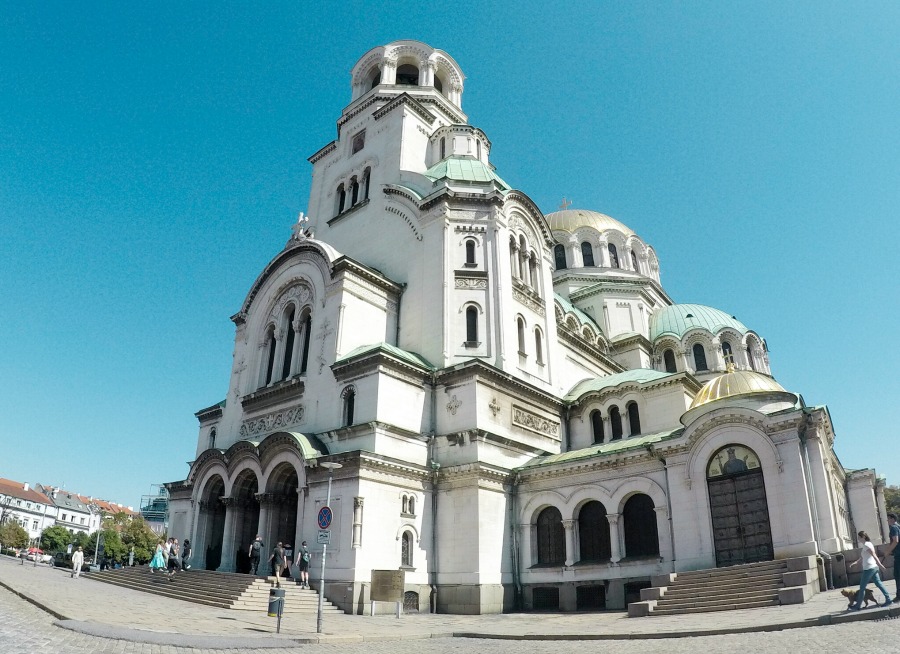
This iconic symbol of Sofia is the 2nd largest cathedral in the Balkan Peninsula (the largest is in Belgrade). It can hold 10,000 people inside! The central dome is made of actual gold imported from Russia. The cathedral was created in honor of the Russian soldiers who died liberating Bulgaria from Ottoman rule during the Russo-Turkish War of 1877.
Russian Church
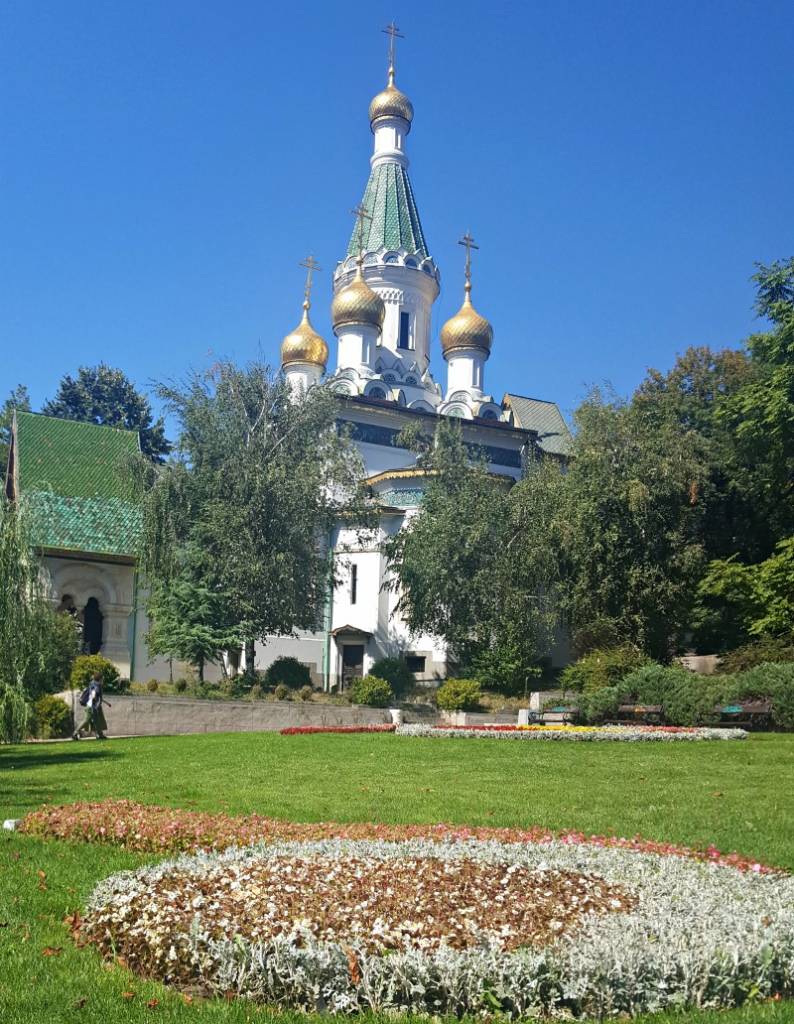
Also called the Church of St. Nicholas the Miracle-Maker. The church was built on the site of the Saray Mosque, which was destroyed in 1882, after the liberation of Bulgaria by Russia from the Ottoman Empire. I thought this looked like a cool toy church. Not sure what children play with toy churches but…
Vitoshka or Vitosha Boulevard
This main commercial street is in the center of Sofia with shops, restaurants, and bars. It has a buzzy cheerful atmosphere and is closed to motor traffic.
Historic Central Mineral Baths
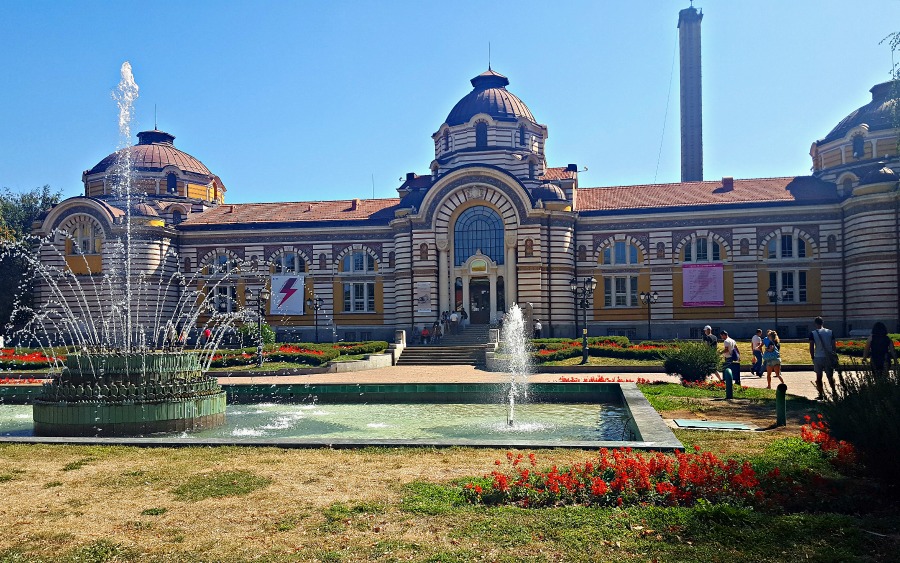
This former bathhouse was used for storage during much of communist area and is now a museum. Couldn’t believe this gorgeous building was wasted on storing things!
Sofia Synagogue
Sofia is proud of its religious tolerance. On one street there is a Catholic cathedral, an Orthodox church, a mosque and this synagogue which is the 2nd largest in Eastern Europe. They are also proud of the fact that they saved their Jewish population from the Nazis during world war II. It’s a great story, one you have to go on the free walking tour to hear!
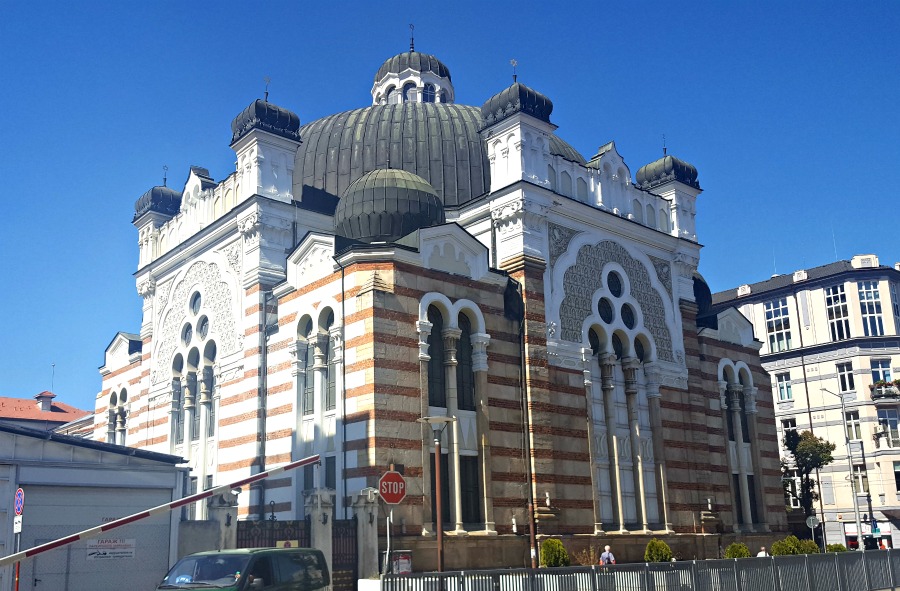
Banya Bashi Mosque
This is the only mosque in Sofia and dates back to the Ottoman period. The name Banya Bashi translates to “many baths” because it was built over natural thermal spas. Sometimes you can see steam rising from the ground near the mosque walls! If you want to see inside, go on a day other than Friday.

*Note that the Synagogue, Mosque, Catholic Cathedral and Orthodox Church are all on the same street forming a unique rectangle of tolerance.
Hadjidragonovite izbi
This is the best restaurant for traditional Bulgarian cuisine. Don’t even try to pronounce this, although they will teach you during the food tour. I actually went to this place on the food tour and again for a proper meal. I honestly could eat here again and again.
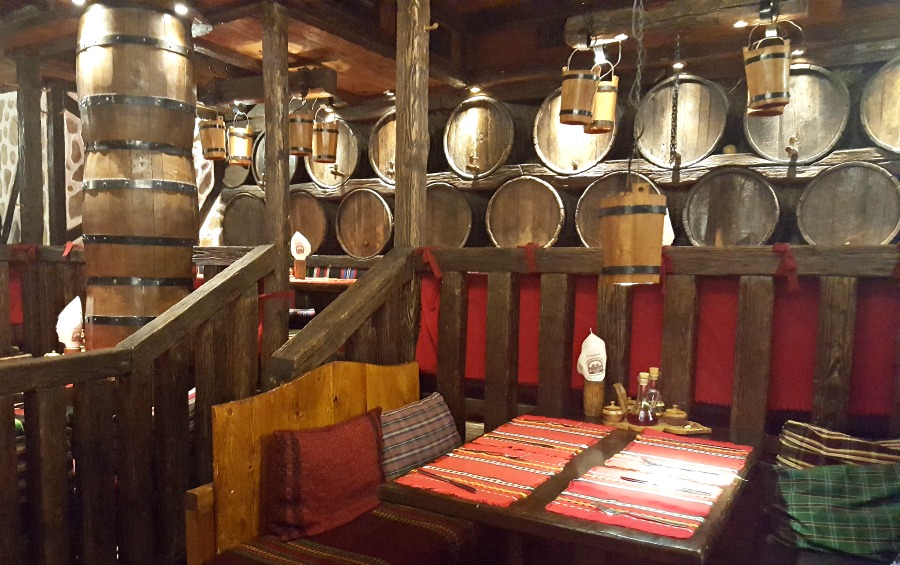
The restaurant has a cozy cellar atmosphere and you eat surrounded by barrels, wood carvings, and traditional clothing. There is also a lovely garden.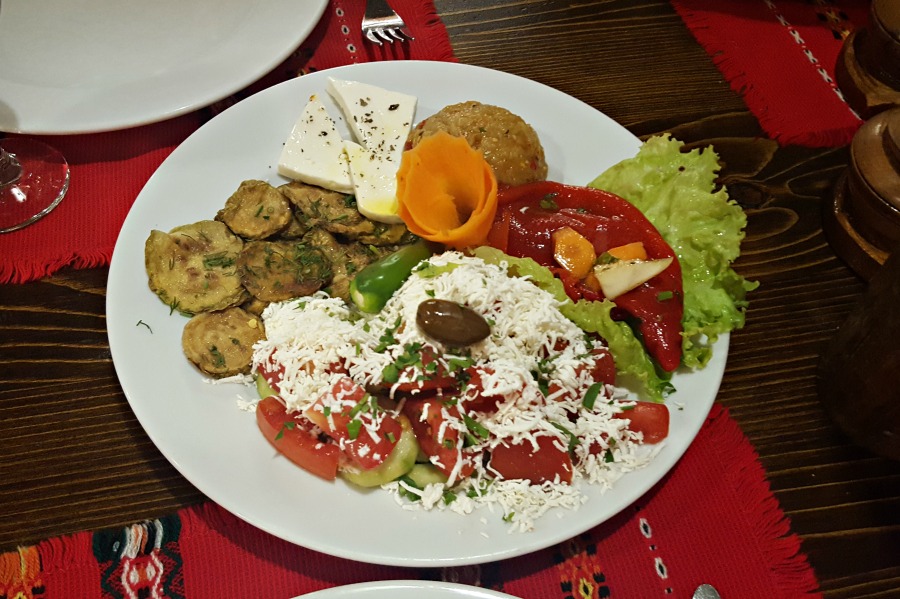
Who doesn’t love a salad covered in cheese?
Rila Monastery
This monastery was founded in the 10th century by St. John of Rila, a hermit whose dwelling and tomb were made into a monastic complex. It was rebuilt after a fire in the mid 19th century and is an important example of Bulgarian Renaissance architecture and symbolizes the Slavic cultural identity, especially important after centuries of Ottoman rule! It is also one of the most visited sites in Bulgaria and a UNESCO world heritage site.
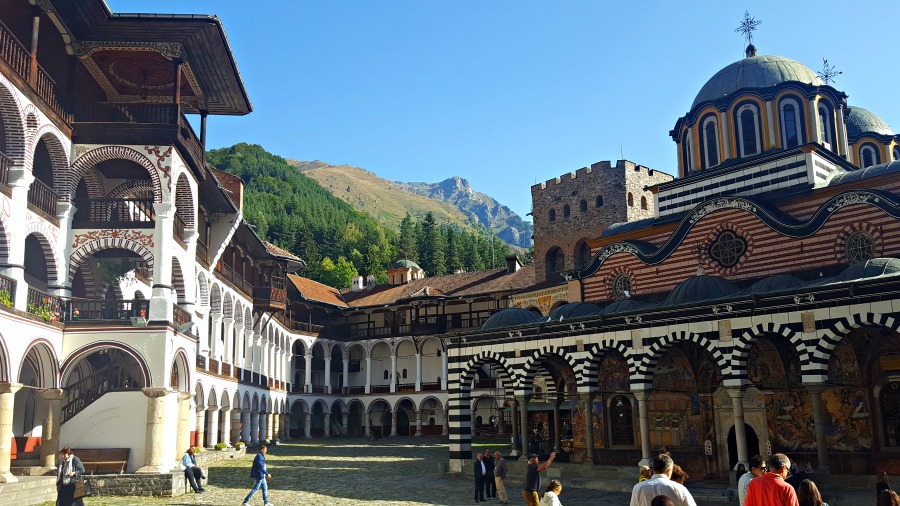
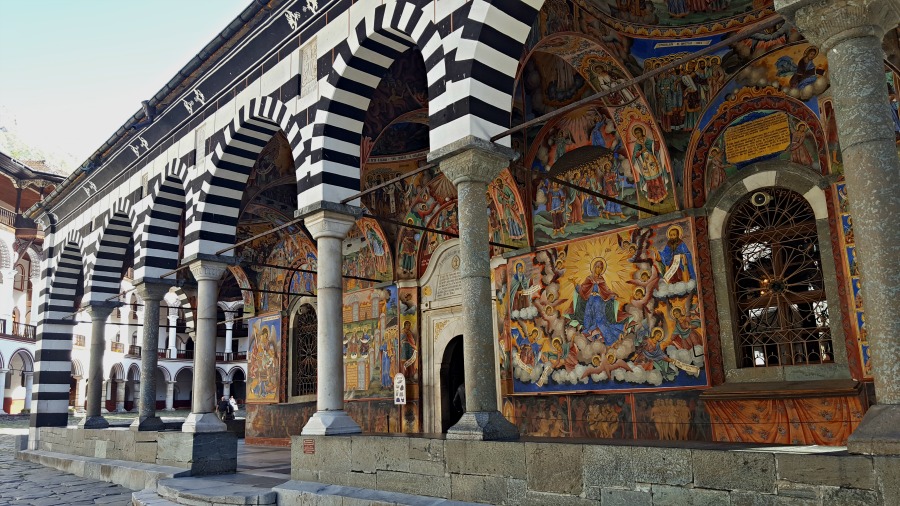
The drive here from Sofia is 123 km and takes 2 hours. I stayed in the Hotel Tzarev Vrah, which is an old but comfortable hotel just a few minutes walk from the monastery. It has a wonderful restaurant where I happily ate all of my meals. (Yes I’m eating lots of things covered in cheese…don’t judge me!)
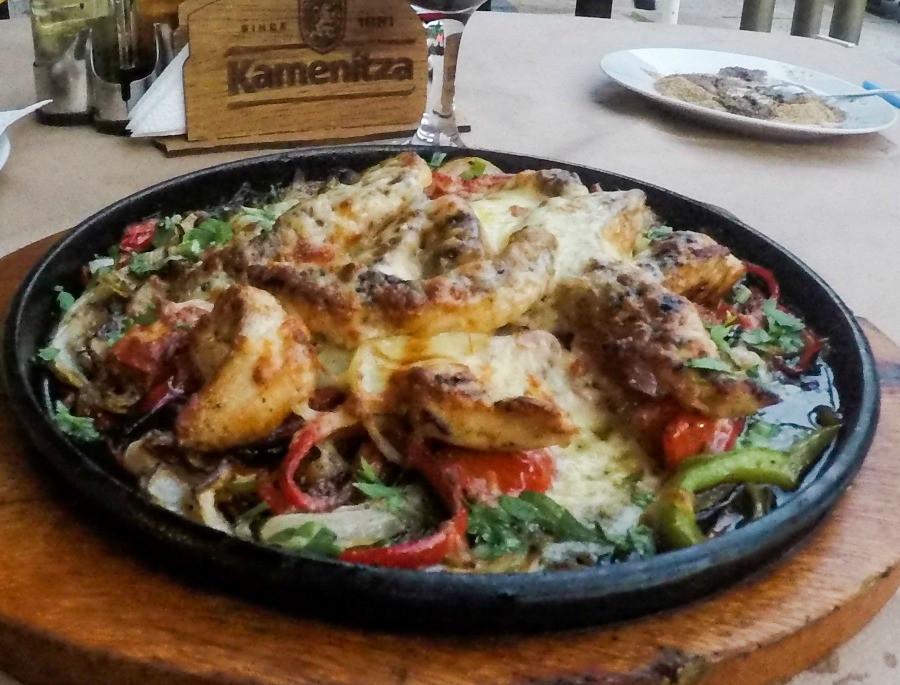
Seven Rila Lakes
These lakes are a group of glacial lakes in the northwestern Rila mountains. The lakes are one above the other connected by small streams that form tiny waterfalls and cascades. From October to June the lakes are usually frozen so the best time to visit is July-September. To access this hiking area you have to go to a village called Panichishte, specifically, the Panichishte lift at the Pionerska hut. The closest bus station is in the town of Dupnitsa.
There is a ski lift that takes you up to the lakes. The lift takes 30 minutes and costs 18 lev ($9). You still have to hike quite a bit to get to the lakes. Allow yourself at least half a day to relax and see all the lakes. I was only able to see 3 lakes in about 2 hours. The lift operates 0900 to 1630 so mind your time and don’t get stuck up there after the lift closed. The walk down the hill looked like it could ruin even the best knees!
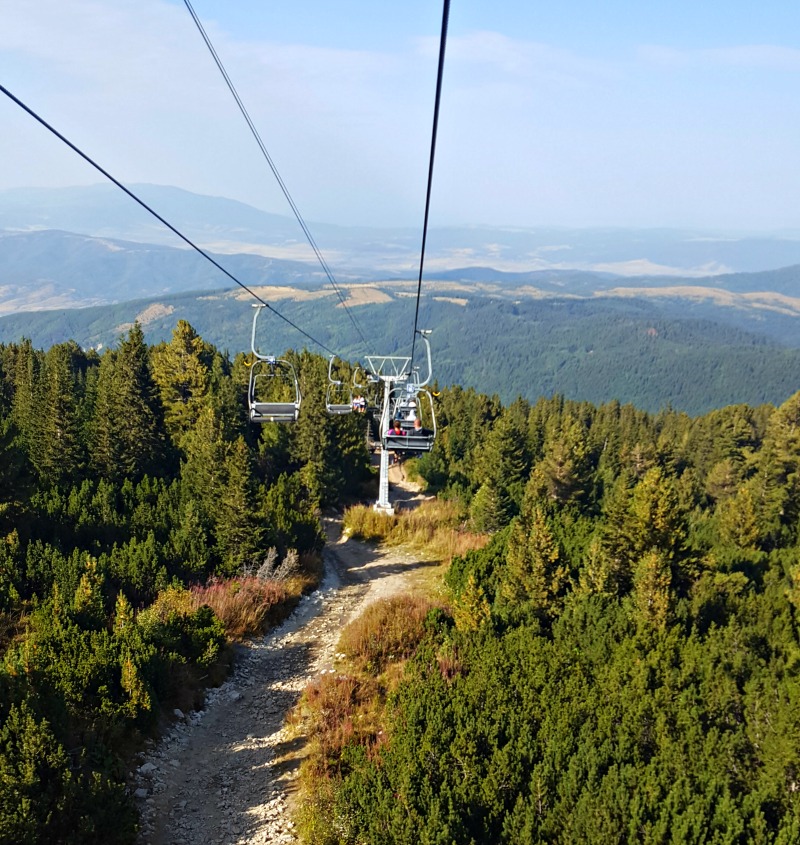
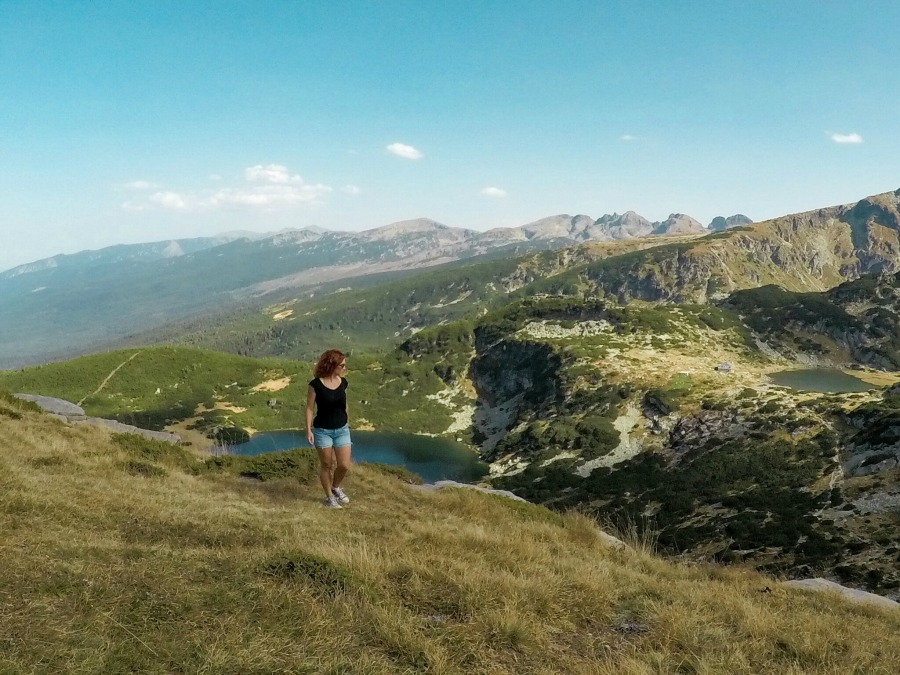
Plovdiv
After I had my fill of the Rila Mountains I headed to Plovdiv. You can read in my other post (link above) the little nightmare I had after breaking my phone, so my trip to Plovdiv was not as easy as it should have been. Like I said in the itinerary section, I would suggest continuing to Plovdiv after the Rila Lakes. Going back to the hotel near the Monastery is backtracking by over 2 hours. (I found this out the hard way…learn from my mistakes!)
Plovdiv is a cool bohemian city and has the distinction of being named a European capital of culture for 2019. It is the 2nd largest city in Bulgaria as well as one of its oldest inhabited cities. Plovidv was included in the Huffington Post’s article, “10 Ancient World Cities You Can Still Visit.”
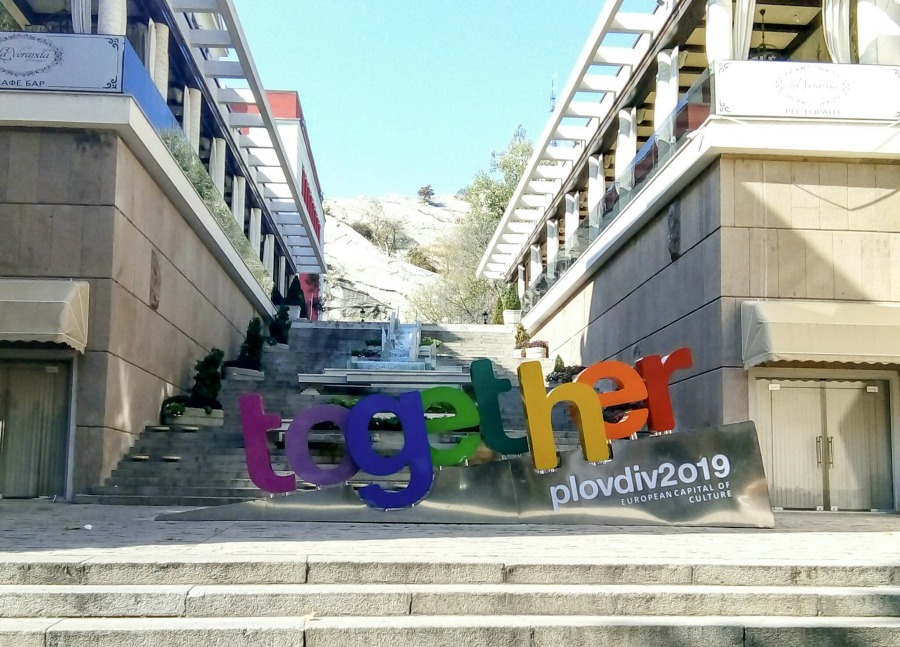
This festive neighborhood with all the flags is called Kapana and is the artsy modern part of the city. My favorite restaurant here was called Pavaj. Just ask someone to write Pavaj for you in Cyrillic or you may not find it!
This is the pedestrian-only central shopping street full of pastel buildings.
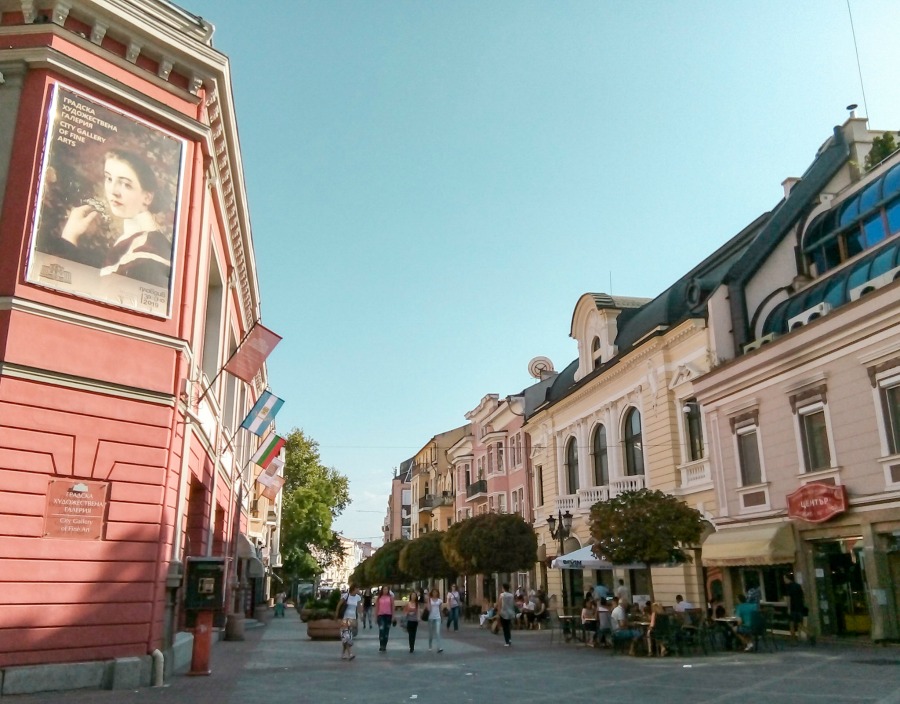
The Dzhumaya Mosque
This mosque is one of oldest Ottoman buildings in the Balkans. As if that isn’t cool enough, it’s located right behind an ancient Roman theater. Plovdiv and Sofia both have excavations of significant and impressive ruins that are continually being found and preserved beneath the city.
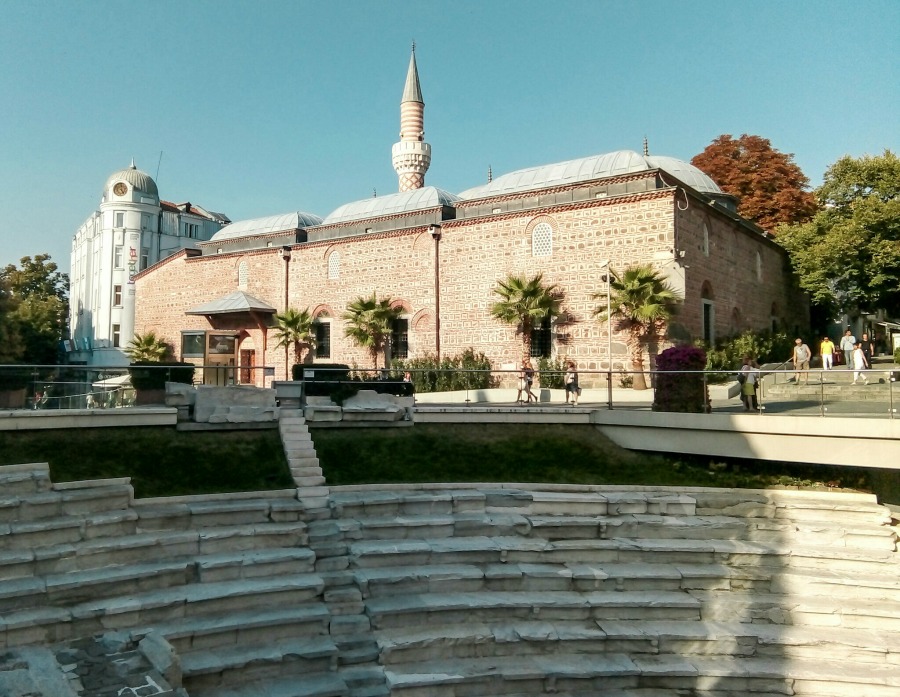
Ancient Roman Theater
This theater is one of the most recognizable landmarks in Plodiv as well as one of the world’s best-preserved ancient theatres. It was constructed in the 1st century AD and can host 5000-7000 visitors. It is still in use for performances today! I heard that attending a show here is an unforgettable experience.
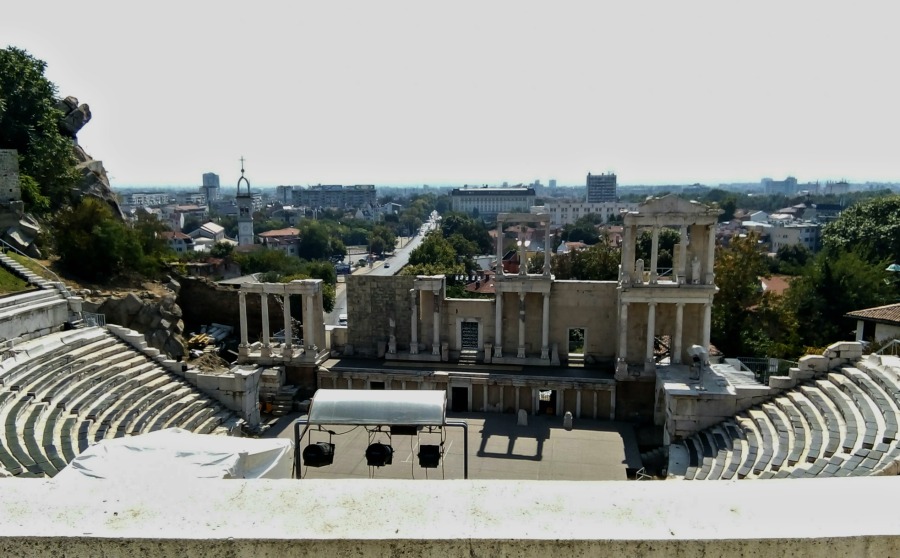
Old City
This section of the city is quieter and has a completely different feel. Cobblestone streets wind between colorful 19th-century homes featuring Bulgarian National Revival architecture, which was a cultural movement by Bulgarians to regain their identity after half a century of Ottoman rule.
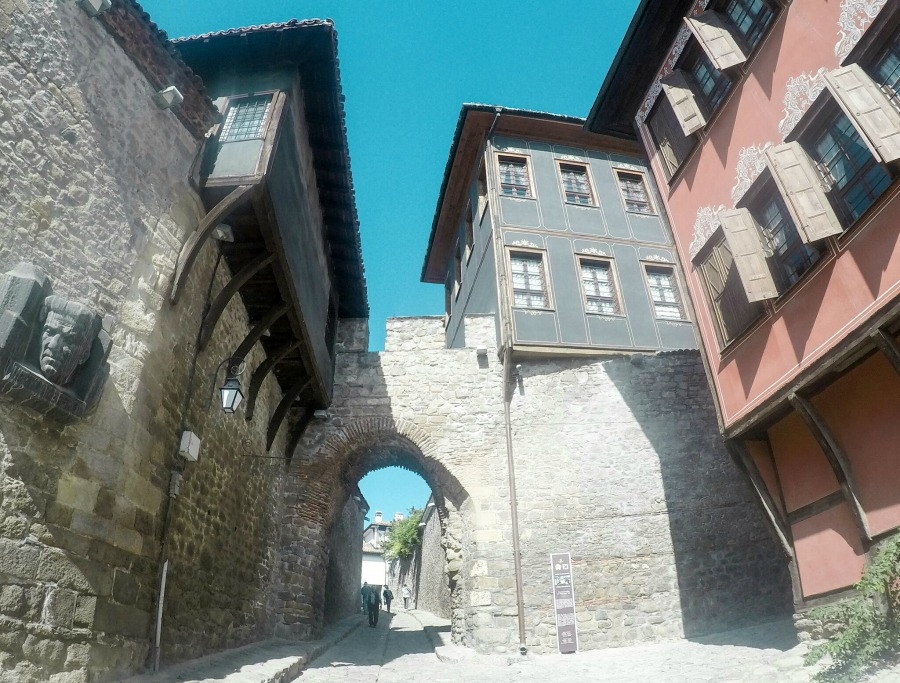

A popular activity for tourists and locals is to climb one of Plovdiv’s 7 hills and take in the view…maybe with a beer at sunset.
Nebet Hill
One of the hills where the ancient town was founded. The site was first settled by Thracians, later expanded by Philip II of Macedon and the Romans.
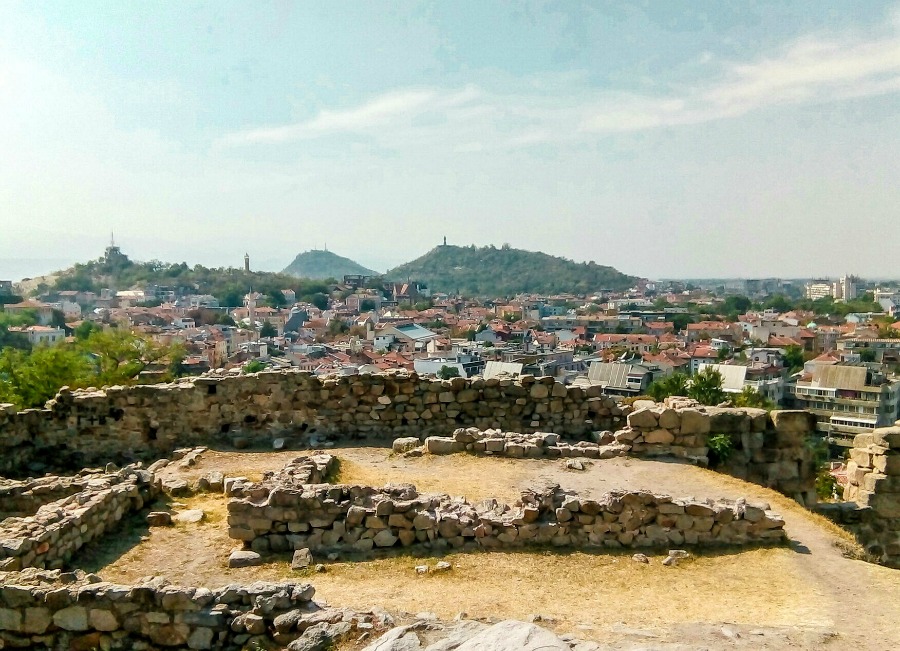
Bunarzhik (The Liberators Hill)
This is the 2nd highest of all the hills. Its name comes from the Ottoman word Bunar (a well), because of the numerous water sources. In Roman times it was called the Hill of Hercules, as there is a large statue of the mythical hero.
Places to Stay
This is hardly an exhaustive list, but I was happy with these places.
Sofia: Hostel Mostel. Make sure to ask for a room on the premises, not the overflow! They have a great common area, comfortable beds with privacy curtains, free breakfast, and dinner and lots of great tours.
Rila Area: Hotel Tsarev Brah
Plovdiv: Hoste Funky Monkey. This perfect location is just minutes from the city center. They had free breakfast, a cozy atmosphere and a terrace with nice sunset views.
You can find all the places I stayed by typing in the names here. Or find your own perfect hotel or hostel.
Have you been to Bulgaria? What places did you love?
Pin it!
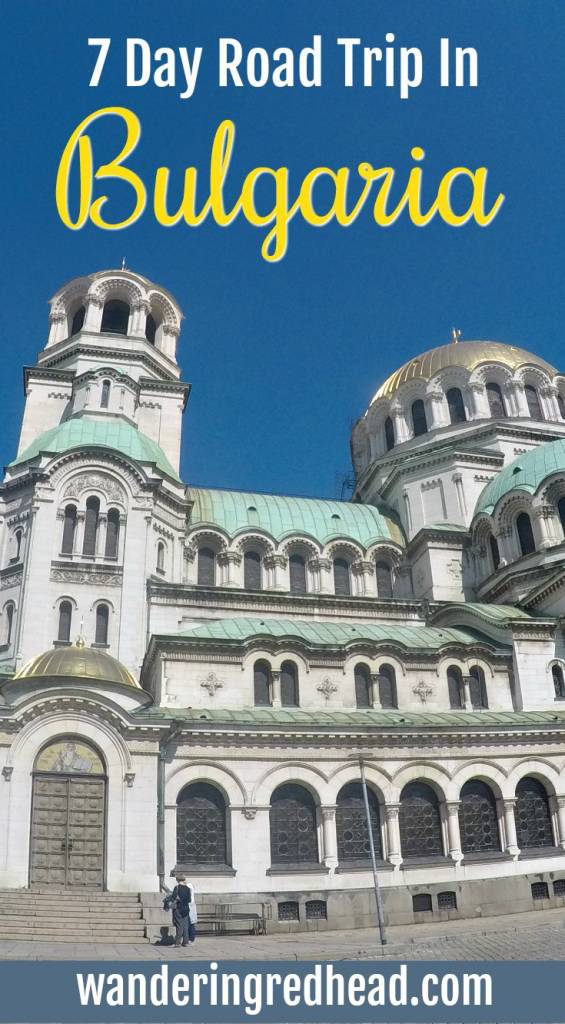

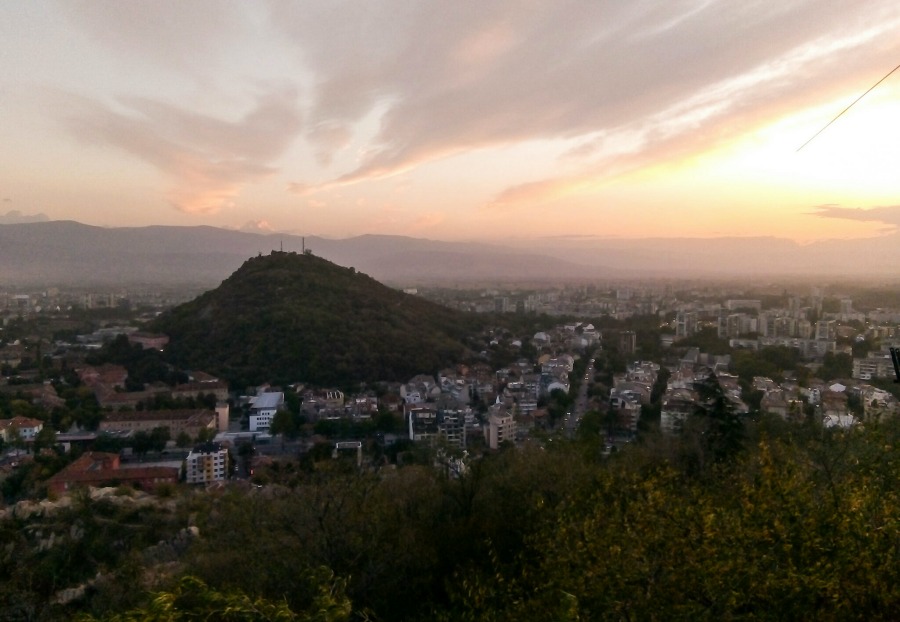


Terri Roeser | 22nd Feb 23
I am going to Bulgaria the end of May. I enjoyed your article, itinerary for 7 Day Road Trip in Bulgaria, as it was quite informative and helpful. Can you please advise which roadway you take from Rila Monastery to Plovdiv without backtracking through Sofia?
csaradar | 1st May 23
Do you use google maps? There weren’t many options. The same road that led south from Sofia to the area where the Monastery was was required to go back towards Sofia for a bit until you see a turn off towards the west with signs for Plovdiv. It should take between 3-4 hrs driving. There is another route the the southern part of Rila but that is longer. The Rila Monastery is in the mountains so there is no direct route west to Plovdiv without first getting out of the mountain area from and to the main north/south highway that connects to Sofia. I hope this helps!
How Cheap is Sofia, Bulgaria? Costs and Pricing for Travellers | 1st Nov 19
[…] Looking for a one week road trip itinerary for Bulgaria? […]
How Cheap is Sofia, Bulgaria? | 1st Nov 19
[…] Looking for a one week road trip itinerary for Bulgaria? […]
sophie | 15th May 19
Hey! This is really helpful! Would you say it was worth getting a car to travel around in? I heard trains aren’t v reliable… How did you find the parking when arriving at destinations?
Thank you so much
csaradar | 15th May 19
I found the car really helpful and it was easy to drive there. I didn’t try parking in Sophia. In the Rila area it was fine and in Plovdiv was a little challenging but doable. I stayed in the old part of town and streets narrow and hilly. Good luck!!!
Practical Guide and Tips for Visiting Albania - WanderingRedHead | 2nd Dec 17
[…] Interested in more of the Balkan Region? Read More: One Week Road Trip in Bulgaria […]
Laura | 28th Nov 17
Such gorgeous architecture, especially the monasteries. Reminds we a lot of the gorgeous churches and monasteries I saw in Macedonia, which I guess makes sense considering how close they are. Will have to add Bulgaria to the list 🙂
csaradar | 28th Nov 17
I hope you do! I also went to Macedonia and there is some similar architecture:)
byronicone | 25th Nov 17
What an exhaustive and insightful post! Bulgaria now goes on my travel backlog. Some of the churches/monastery photos remind me of how much I enjoyed Montserrat in Catalonia. Have you been?
Zoe | Together In Transit | 18th Nov 17
Interesting route & great photos!
csaradar | 20th Nov 17
Thanks!!!
Christina | 18th Nov 17
This post brought back such great memories for me!!! I did 2 weeks in Bulgaria earlier this year and loved it so much. I did the Balkan Bites tour too lol and now rave about it to everyone that goes. Next time, you HAVE to stop by Veliko Tarnovo too – it was my favourite. I ended up in Varna at the end of the trip and it was actually nicer than I expected. Definitely very beach resort-y butI went in May before it was peak season (or warm enough for the beach bars to open) so there weren’t tons of tourists. it was a cool place – some neat Communist ruins, a place called “Stone Forest” (google it – it’s cool!) and free sulphur hot springs haha.
csaradar | 20th Nov 17
I really wanted to go to Veliko Tarnovo…not sure if you saw my other post about being lost in the mountains but it sort of screwed up my plans 🙁 Nice to hear you liked Varna. I want to go back and see all those places you mentioned!
Michelle | 18th Nov 17
Bulgaria made the list of must visit places for 2018, so I hope it stays charming. I cannot believe there are so many free tours, that’s great! I really don’t know much about Bulgarian food. I think I will go research that now. LOL!
csaradar | 20th Nov 17
The food was really great! What list is this that you mention?
Mina | 18th Nov 17
I’m Bulgarian and love reading what foreign visitors think of my home country. I’m so happy you enjoyed it! And you gave such awesome tips here. Thank you 🙂
csaradar | 20th Nov 17
I’m extra happy to get feedback from a Bulgarian! I love your country and will definitely go back!
madhu-on-the-go | 18th Nov 17
Interesting read.like u said Bulgaria was never in my wishlist.bt after reading it sounds really interesting
csaradar | 20th Nov 17
I can’t believe it wasn’t more busy considering how many great places they have.
madhu-on-the-go | 20th Nov 17
That’s true..some places are hidden treasure
That Time I Was Lost in the Mountains of Bulgaria - WanderingRedHead | 17th Nov 17
[…] Read More: Itinerary for 7 Day Road Trip in Bulgaria […]